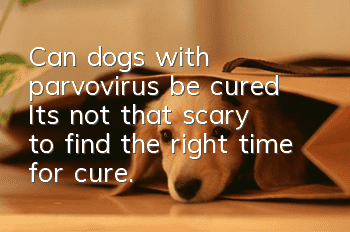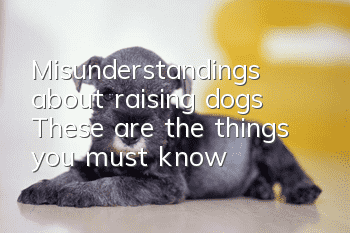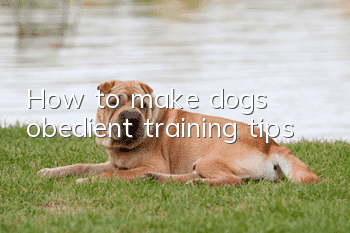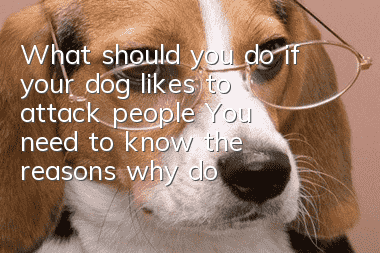Can dogs with parvovirus be cured? It’s not that scary to find the right time for cure.

Dogs with parvovirus can be cured
Dogs with parvovirus have a chance of being cured. The main thing is to find the right time for cure. As long as it is detected early and treated as soon as possible, the dog can be cured.
What is parvovirus?
Parvovirus is a highly contagious virus and one of the most serious infectious diseases that harms dogs. Parvovirus mainly attacks intestinal epithelial cells and cardiomyocytes, causing symptoms such as gastrointestinal diseases and myocarditis. Dogs of all ages can be infected with parvovirus, but puppies are more likely to be infected.
The virus can survive for half a year at 4-10 degrees Celsius, 14 days at 37 degrees Celsius, 24 hours at 56 degrees Celsius, 15 minutes at 80 degrees Celsius, and is also highly contagious at room temperature 3 months and can survive in feces for months to years. If a dog at home is infected with the virus, even if it is treated, it is still necessary to strengthen the disinfection of the home and still pay attention to the dog's physical condition. In addition, it is best not to raise other dogs within half a year, otherwise new dogs will be easily infected with parvovirus. The virus is highly resistant to commonly used disinfectants, ether, chloroform, and alcohols, but is sensitive to formalin, oxidants, ultraviolet rays, and sodium hypochlorite.
What are the factors that induce parvovirus?
The factors that induce parvovirus mainly include three aspects: infection, improper diet, and cold. In addition, sudden cold weather, sudden changes in the environment, and long-distance transportation are also factors that promote the occurrence of parvovirus. It is small and can occur all year round, but is particularly common in spring.
Infectious
As you know, parvovirus is highly contagious. Therefore, once you come into contact with a sick dog, you will almost 100% be infected. So the reason the dogs are so small is because they are infected.
Improper diet
Except for puppies, which may suffer from myocarditis-type parvovirus, almost most dogs suffer from enteritis-type parvovirus. Therefore, if the dog is not infected, it is a gastrointestinal disease. A large part of gastrointestinal problems are caused by improper feeding by pet owners.
Improper diet includes overfeeding and eating unsuitable foods. Puppies have no sense of fullness, so they will eat food whenever they see it. If the owner does not control it, it is very dangerous for dogs with imperfect digestive systems.
In addition, many food dogs cannot eat. If the diet is improper, it will cause gastrointestinal problems in dogs and induce minor diseases. Foods that dogs cannot eat include milk (lactose is not absorbed by puppies that cause diarrhea), small poultry bones (which scratch the gastrointestinal tract), greasy foods (eating greasy foods that cause diarrhea), dangerous foods (chocolate, onions) , ginger and garlic, spicy foods, grapes, etc.).
Coldness
Coldness can cause gastrointestinal problems in dogs, and can also reduce the body's resistance and lead to disease invasion.
How to tell if your dog has parvovirus
Parvovirus is essentially a gastrointestinal disease in dogs, and the folk saying is that it turns the intestines. Therefore, when dogs are infected with the virus, their symptoms are often similar to catching cold or eating bad food. Especially for adult dogs, the initial symptoms are less obvious, so the best treatment time is missed, leading to aggravation of the condition.But the characteristic of parvovirus is its rapid onset, with the general course of disease lasting 7 days. Therefore, it is very important to detect the dog’s condition early within 7 days. Generally, 1-3 days is the early stage, 3-5 days is the middle stage, and 5-7 days is the late stage.
Initial stage
The dog will initially show a loss of appetite, lack of energy, and will be accompanied by vomiting and diarrhea. The vomitus is mushy, and sometimes even the food that has just been eaten is vomited; the excretion is frequent and large in amount, mostly in the form of thick paste or thin, and the color is yellow or light green.Mid-term
At this stage, the best time for treatment has actually been missed. At this stage, the dog’s mental state is poor and lethargic. In addition, dogs will vomit non-stop, almost whatever they eat, and the vomit will be light red, similar to ketchup. Most of the excreted feces are jelly-like and blood-like feces, which are pink to brown in color. The feces are thinner than before and smell more fishy.Later stage
At this stage, the dog’s chances of being cured are greatly reduced. The dog will be in a very bad state and unable to sleep at all. Its eyes are dull, its mouth is dry, its nose is dry, and its limbs are weak. The vomitus is bright red and the urine output is small and yellow. Also, a dog’s breath smells sour.The above symptoms are mainly small enteritis type, and the symptoms are more obvious. There is also myocarditis-type parvovirus. This type is more common in puppies between 4 and 6 weeks old. It has no obvious symptoms and may only show mild diarrhea, followed by weakness, moaning, and difficulty breathing. Diagnosis can reveal fast and weak pulse, heart disease, and weak pulse. A murmur was heard. Dogs with this type of parvovirus are likely to die suddenly within a few hours due to acute respiratory depression.
How to treat parvovirus
First of all, there is no specific medicine for the treatment of parvovirus, so it is important to seize the best time for treatment. If you find that your dog has symptoms of parvovirus, such as gastrointestinal discomfort, it is best to buy test strips for testing as soon as possible.
How to use the small test paper: Dip the dog feces with a cotton swab, put it into the sample tube of the diluent and stir evenly, then drop the extracted liquid into the sample hole of the test strip and wait for 5-10 minutes. If the test result is a negative red line, it means that the dog is not infected with parvovirus, whereas if it is positive, it means that the dog is infected. If infection is found, send the dog to the hospital for treatment as soon as possible. Generally speaking, hospital treatment mainly includes five aspects: rehydration treatment, use of antibiotics, antidiarrheal drugs, injection of interferon, and blood monoclonal antibodies.
Fluid therapy is to replenish the energy of the dog's body, because the dog must eat and drink at this time, and prevent dehydration through infusion; antibiotics are used to control secondary infections, including penicillin, gentamicin, etc.; for a long time superiorVomiting and diarrhea will cause dehydration in dogs, so they need to take antidiarrheal drugs; hyperimmune serum and monoclonal antibody treatments are targeted at dogs with milder early-stage disease to control virus replication and exacerbation.
After sending the dog to the hospital, be sure to thoroughly and repeatedly disinfect the kennel and dog belongings, including the car used to take the dog to the hospital. Disinfectants can use 2% caustic soda water or 10-20% bleaching powder, potassium hypochlorite, 8% chlorine dioxide, etc. In addition, the home should be thoroughly disinfected and windows should be opened for ventilation. If conditions permit, it is best to throw away the dog's kennel or food bowl and replace it with a new one.
Dogs should not eat or drink after getting sick. Feeding them at this time will only increase the burden on the gastrointestinal tract and worsen the condition. Oral administration of glucose and sodium chloride has no therapeutic significance, so do not force feed it. Vomiting and diarrhea will no longer occur within 48 hours after treatment, and easily digestible food can be fed experimentally, such as millet soup, soaked dog food, etc.
How to prevent parvovirus
To prevent parvovirus, we must start by inducing parvovirus. Predisposing factors for parvovirus include infection, improper diet, and exposure to cold. Therefore, you should pay attention to the following points when raising dogs.
1. Do not take your dog out to play before it has been vaccinated. If you must go out, it should be within a controllable range and do not come into contact with strange dogs.
2. Get vaccinated regularly. Preventing parvovirus can start with vaccination. Many pet owners think that if their dogs have been vaccinated against parvo once, they will not get it again. This is actually wrong. Even after the injection in the first year, you must have at least one booster injection every year in order to effectively prevent parvovirus.
3. Pay attention to your diet, be careful about feeding, and do not feed people too greasy food.
4. Strengthen the dog's body resistance, take the dog out for walks more often, and improve the physical fitness.
- Why can’t dogs eat onions? Are onions poisonous to dogs?
- What are the most vindictive dogs? These dogs are "small-minded"
- What diseases in dogs can be transmitted to humans? Pay attention to the hygiene and health of dogs.
- What is normal for dogs to have eye mucus? How to deal with excessive eye mucus in dogs
- How to prevent sudden paralysis of dog’s hind limbs
- How to build trust with your dog and teach you tips on how to live in peace with your dog
- What your dog did before he died: these symptoms mean your dog is leaving you
- How to cut a dog's hair? Do you know the order of cutting a dog's hair?
- Things to note when fostering a dog. Teach you how to choose a fostering place.
- What is gastric torsion in dogs? What causes gastric torsion in dogs?



